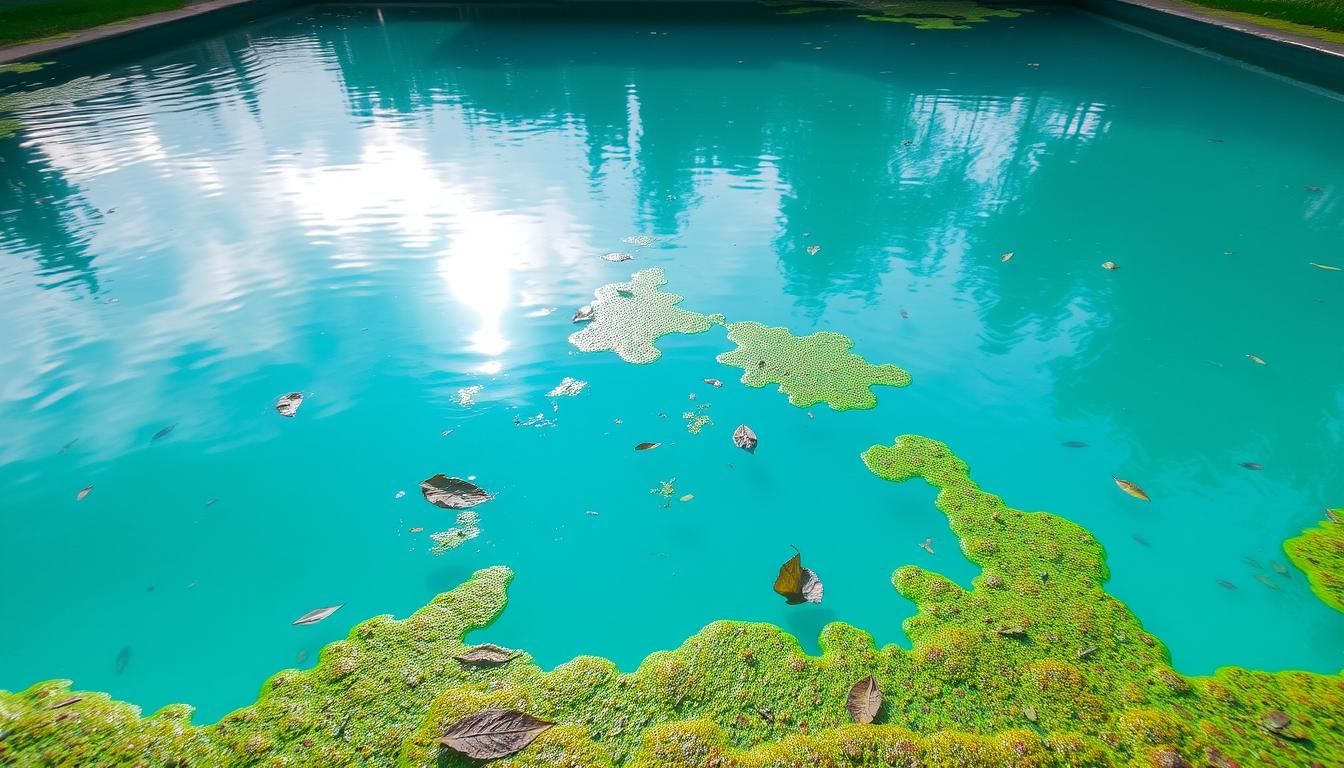
You’ve followed pool maintenance guidelines and shocked your pool. Yet, the water remains green. It’s frustrating and leaves many pool owners confused about what went wrong.
This issue is more common than you might think. Faulty filtration causes 80% of green water problems in pools.
Green pool water isn’t just unsightly. It can lead to health issues like ear infections and skin diseases.
Let’s explore why this happens and how to fix it. We’ll look at common causes of persistent green pool water. Then, we’ll provide practical solutions to tackle this issue.
We’ll cover maintaining chlorine levels and mastering the SLAM process. We’ll also help you avoid common mistakes. Together, we’ll turn your green pool into a sparkling oasis.
Common Causes of Persistent Green Pool Water
Green pool water after shocking can be frustrating. Several factors may cause this issue. Let’s explore the main reasons and how to fix them.
Understanding these causes is key to effective algae removal. It helps maintain a clear swimming environment. We’ll discuss how to address them through proper pool care.
Inadequate Chlorine Levels for CYA (Cyanuric Acid) Concentration
An imbalance between free chlorine and cyanuric acid (CYA) often causes green water. CYA stabilizes chlorine, preventing quick UV ray dissipation.
High CYA levels can reduce chlorine’s ability to fight algae. Maintaining the right free chlorine to CYA ratio is crucial.
| CYA Level (ppm) | Minimum Free Chlorine (ppm) | Ideal Free Chlorine (ppm) |
|---|---|---|
| 30 | 2.0 | 3.0-4.0 |
| 50 | 3.0 | 4.0-6.0 |
| 80 | 4.0 | 6.0-8.0 |
| 100 | 5.0 | 8.0-10.0 |
Presence of Algae Requiring SLAM (Shock Level and Maintain) Process
Algae growth is a major cause of green pool water. It can quickly multiply, turning your pool murky.
The SLAM process effectively eliminates algae. It involves raising and maintaining high chlorine levels. The ideal shock dose is 1 pound per 10,000 gallons of water.
Run your pool filter non-stop during SLAM. This circulates chlorine-rich water and removes dead algae. Experts suggest filtering for at least eight hours daily.
Regular pool cleaning helps dislodge algae. Brush the walls and floor to improve SLAM treatment effectiveness.
High Metals Content, Particularly Iron, in Pool Water
High metal levels, especially iron, can cause a green tint after shocking. Chlorine can oxidize metals, creating a green hue like algae.
Use the polyfill method to check for metal content:
- Fill a clean, white sock with polyfill material.
- Secure the open end and place it in the skimmer basket.
- Run the pump for at least 8 hours, then remove the sock.
- If the polyfill turns rusty or brown, iron is present in the water.
Use a metal sequestrant or flocculant to remove metals if confirmed. Find and fix the source of contamination to prevent future issues.
Regular testing and balancing of chemical levels is crucial. Understanding common causes and using effective solutions can restore your pool’s pristine state.
Addressing Algae Growth and Eradicating Green Water
Algae growth requires a thorough approach to restore pool water clarity. The SLAM process effectively eradicates algae and maintains a crystal-clear pool. It involves raising and maintaining high chlorine levels until algae is eliminated.
Implementing the SLAM Process for Effective Algae Removal
Avoid common mistakes when using the SLAM process. Overusing flocculants can clog your filter media, causing more problems. Relying on algaecides is ineffective against active algae blooms.
Focus on maintaining the proper free chlorine to CYA ratio. Use liquid chlorine, like unscented bleach. Avoid products with additives such as copper, which can stain pool surfaces.
Avoiding Common Mistakes: Overuse of Flocculants and Algaecides
Regular water testing and chemical adjustments are crucial for preventing algae growth. Maintain balanced pH, alkalinity, and chlorine levels to create an algae-unfriendly environment. Run your filter daily and brush pool surfaces.
Clean skimmer baskets regularly. These pool cleaning tips will help keep your pool algae-free. Enjoy a sparkling, inviting oasis all season long.







